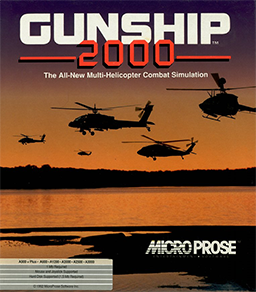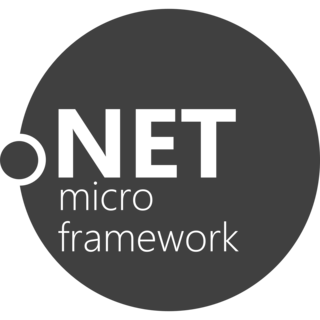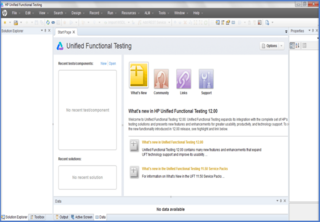Borland Software Corporation was a computing technology company founded in 1983 by Niels Jensen, Ole Henriksen, Mogens Glad, and Philippe Kahn. Its main business was developing and selling software development and software deployment products. Borland was first headquartered in Scotts Valley, California, then in Cupertino, California, and then in Austin, Texas. In 2009, the company became a full subsidiary of the British firm Micro Focus International plc. In 2023, Micro Focus was acquired by Canadian firm OpenText, which later absorbed Borland's portfolio into its application delivery management division.
A multi-user dungeon, also known as a multi-user dimension or multi-user domain, is a multiplayer real-time virtual world, usually text-based or storyboarded. MUDs combine elements of role-playing games, hack and slash, player versus player, interactive fiction, and online chat. Players can read or view descriptions of rooms, objects, other players, and non-player characters, and perform actions in the virtual world that are typically also described. Players typically interact with each other and the world by typing commands that resemble a natural language, as well as using a character typically called an avatar.
In multiplayer online games, a MUSH is a text-based online social medium to which multiple users are connected at the same time. MUSHes are often used for online social intercourse and role-playing games, although the first forms of MUSH do not appear to be coded specifically to implement gaming activity. MUSH software was originally derived from MUDs; today's two major MUSH variants are descended from TinyMUD, which was fundamentally a social game. MUSH has forked over the years and there are now different varieties with different features, although most have strong similarities and one who is fluent in coding one variety can switch to coding for the other with only a little effort. The source code for most widely used MUSH servers is open source and available from its current maintainers.
FurryMUCK is one of the oldest and largest non-combat MUD-style games in existence. It was founded in 1990 as an online gathering place for furry fans to meet and socialize in a virtual role-playing environment. Over time, FurryMUCK has become one of the central focal points for furry fandom, with a user base consisting of several thousand, with over 150 users regularly signed on simultaneously.

Novell, Inc. was an American software and services company headquartered in Provo, Utah, that existed from 1980 until 2014. Its most significant product was the multi-platform network operating system known as Novell NetWare.
MicroStation is a CAD software platform for two- and three-dimensional design and drafting, developed and sold by Bentley Systems and used in the architectural and engineering industries. It generates 2D/3D vector graphics objects and elements and includes building information modeling (BIM) features. The current version is MicroStation CONNECT Edition.
Elendor is a free online text-based multi-user game that simulates the environment of J. R. R. Tolkien's Middle-earth. Users create characters by determining species, sex, culture, description, history and then role-playing with other users within the setting and atmosphere of Tolkien's world. For the purposes of consistency, the game accepts The Lord of the Rings, The Hobbit and The Silmarillion and to a lesser extent the other works of Tolkien as canonical materials. The time frame is shortly before the onset of the main events of The Lord of the Rings with Bilbo having gone to Rivendell. The game is run on a MUSH server using a variant of PennMUSH.

Active Worlds is an online virtual world, developed by ActiveWorlds Inc., a company based in Newburyport, Massachusetts, and launched on June 28, 1995. Users assign themselves a name, log into the Active Worlds universe, and explore 3D virtual worlds and environments that others have built. ActiveWorlds allows users to own worlds and universes, and develop custom 3D content. The browser has web browsing capabilities, as well as voice chat, and basic instant messaging features.
LPMud, abbreviated LP, is a family of multi-user dungeon (MUD) server software. Its first instance, the original LPMud game driver, was developed in 1989 by Lars Pensjö. LPMud was innovative in its separation of the MUD infrastructure into a virtual machine and a development framework written in the programming language LPC.
A MOO is a text-based online virtual reality system to which multiple users (players) are connected at the same time.

TurboGears is a Python web application framework consisting of several WSGI components such as WebOb, SQLAlchemy, Kajiki template language and Repoze.
TinyTIM is a MUSH created in 1990 by Sketch and Trout.Complex. It is the oldest running MUSH in existence, having held that status at least since 1995.

Gunship 2000 is a helicopter combat flight simulation video game developed and published by MicroProse as a follow-up to their earlier game Gunship. It was originally released in 1991 for DOS; this version received an expansion in 1992. The Amiga, PC-98, Amiga CD32 and PlayStation versions were released in 1993, 1994 and 1996 respectively. A sequel, Gunship!, was released in 2000.

Visual Basic (VB) before .NET, sometimes referred to as Classic Visual Basic, is a third-generation programming language, based on BASIC, and an integrated development environment (IDE), from Microsoft for Windows known for supporting rapid application development (RAD) of graphical user interface (GUI) applications, event-driven programming and both consumption and development of components via the Component Object Model (COM) technology.

The .NET Micro Framework (NETMF) is a .NET Framework platform for resource-constrained devices with at least 512 kB of flash and 256 kB of random-access memory (RAM). It includes a small version of the .NET Common Language Runtime (CLR) and supports development in C#, Visual Basic .NET, and debugging using Microsoft Visual Studio. NETMF features a subset of the .NET base class libraries, an implementation of Windows Communication Foundation (WCF), a GUI framework loosely based on Windows Presentation Foundation (WPF), and a Web Services stack based on Simple Object Access Protocol (SOAP) and Web Services Description Language (WSDL). NETMF also features added libraries specific to embedded applications. It is free and open-source software released under Apache License 2.0.
TinyMUCK or, more broadly, a MUCK, is a type of user-extendable online text-based role-playing game, designed for role playing and social interaction. Backronyms like "Multi-User Chat/Created/Computer/Character/Carnal Kingdom" and "Multi-User Construction Kit" are sometimes cited, but are not the actual origin of the term; "muck" is simply a play on the term MUD.

OpenText UFT One, formerly known as Micro Focus Unified Functional Testing and QuickTest Professional (QTP), is software that provides functional and regression test automation for software applications and environments.

Tiny Core Linux (TCL) is a minimal Linux kernel based operating system focusing on providing a base system using BusyBox and FLTK. It was developed by Robert Shingledecker, who was previously the lead developer of Damn Small Linux. The distribution is notable for its small size and minimalism; additional functions are provided by extensions. Tiny Core Linux is free and open-source software licensed under the GNU General Public License version 2.

GroupWise is a messaging and collaboration platform from OpenText that supports email, calendaring, personal information management, instant messaging, and document management. The GroupWise platform consists of desktop client software, which is available for Windows,, and the server software, which is supported on Windows Server and Linux.

GDevelop is a 2D and 3D cross-platform, free and open-source game engine, which mainly focuses on creating PC and mobile games, as well as HTML5 games playable in the browser. Created by Florian Rival, a software engineer at Google, GDevelop is mainly aimed at non-programmers and game developers of all skillsets, employing event based visual programming similar to engines like Construct, Stencyl, and Tynker.







